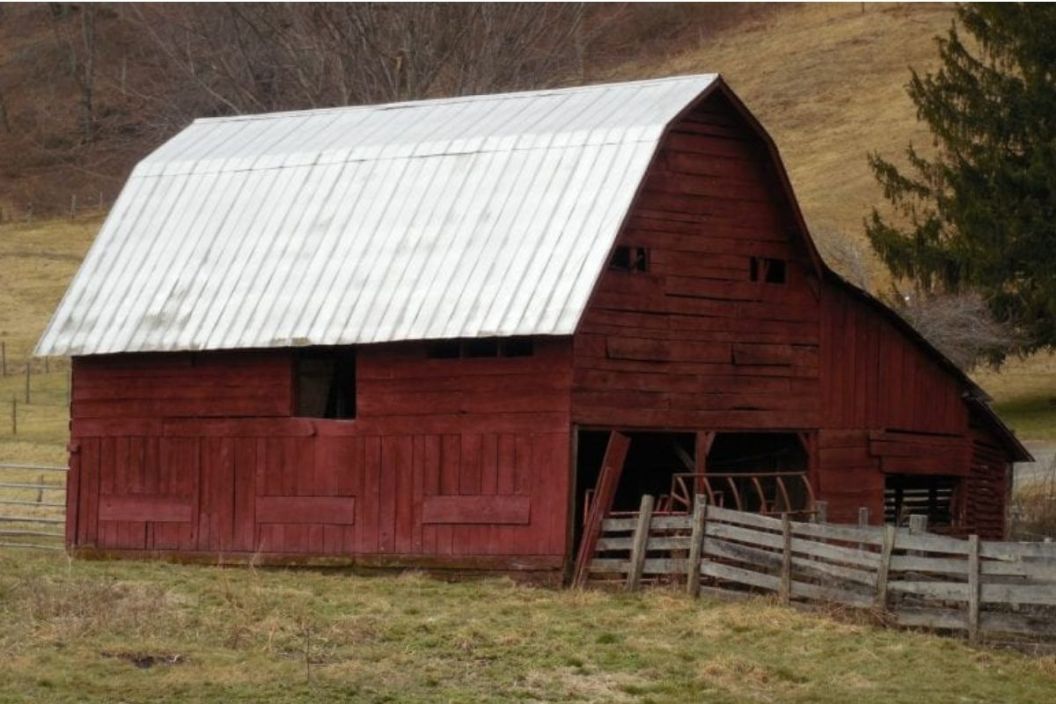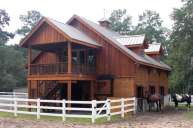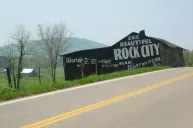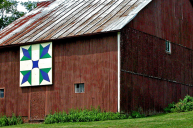You've seen countless red barns along the countryside, but have you ever wondered why are barns red? There are a few urban (or rural?) legends that attempt to answer the question, our favorite being that barns are painted red to help lost cows find their way home. (Cows are actually colorblind to the colors red and green so that...would not help.) But really, the answer is pretty simple: Red paint was cheap.
According to This Old House, most farmers in the days of old didn't paint their barns. However, they learned over time that the harsh elements exposed the wood to rot. Farmers needed to find a way to protect their barns, and paint seemed to be an obvious solution.
To create the coat to preserve their barns, farmers mixed skimmed milk, lime and red iron oxide, which produced a dark, rusty color. The addition of linseed oil to the mixture helped protect the wood against rotting. The paint was cheap to make, and it lasted for years. But as Mental Floss points out, these barns weren't the traditional "barn red" we normally think of, but more of a burnt orange color.
Read More: Ever Seen Stars on a Barn? Here's What Those Mean
Thankfully, paint became more plentiful in the late 1800s, giving farmers more options for colorful hues. White barns became more common, but white paint was more expensive. So many farmers opted for the cheapest paint: red.
Another reason red was popular was because of the darkness in color, which helped control temperature. Red absorbed more of the sun's rays than bare wood and kept the inside of the barn warmer during the winter months.
Barns now come in all colors, but traditional red will always remind us of simpler times.
This post was originally published in May of 2017.
Now Watch: The 5 Best Log Cabin Kits to Buy and Build




